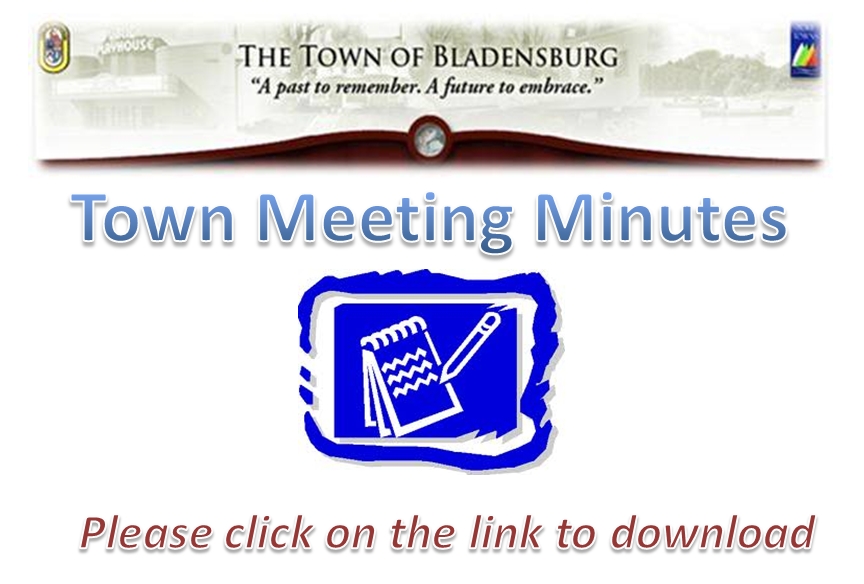Overview
The Town of Bladensburg is a residential suburb of Washington, D.C., on the Anacostia River. Originally called Garrison’s Landing, it was renamed in honor of Thomas Bladen, Governor of Maryland 1742-1747. The defeat (August 24, 1814) here of American troops under Gen. W. H. Winder enabled the British under General Robert Ross to march on Washington, D.C., and burn many of the public buildings. Despite the outlawing of dueling four years before, the Town was also the scene of the historic duel in which Stephen Decatur, the naval hero, was mortally wounded in 1820 by James Barron. Bladensburg was a busy port, shipping out flour and tobacco, until the river silted up by 1800. It is the site of Bostwick (c.1747) and Indian Queen Tavern, also known as George Washington House (c.1732). The Town was home of William Wirt, anti-Masonic candidate for president in 1832. Chartered 1742, Incorporated 1854 (Chapter 137, Acts of 1854).
Bladensburg is approximately 1 mile from the Washington DC line to the NE and a residential suburb of Washington, D.C., on the Anacostia River. The Town of Bladensburg is also a part of the larger group of communities called the Port Towns.
The Town of Bladensburg, originally called Garrison’s Landing, was renamed in honor of Thomas Bladen, governor of Md. 1742-1747. Bostwick was also built at this time, and would later be home to the first Secretary of the Navy. (c.1747) and Indian Queen Tavern, also known as George Washington House (c.1732). The defeat (August 24, 1814) here of American troops under Gen. W. H. Winder enabled the British under General Robert Ross to march on Washington, D.C., and burn many of the public buildings. Despite the outlawing of dueling four years before, the Town was also the scene of the historic duel in which Stephen Decatur, the naval hero, was mortally wounded in 1820 by James Barron. Bladensburg was a busy port, shipping out flour and tobacco.
Success came with a price however, as tobacco crops made the soil brittle. As more and more tobacco was planted, the fragile soil washed down into the Anacostia River, reducing its depth and width. By the early 19th century it became difficult for ocean-going vessels to make port at Bladensburg. The port finally saw off its last vessel in the 1830s. The Town was home of William Wirt, anti-Masonic candidate for president in 1832. Chartered 1742, Incorporated 1854 (Chapter 137, Acts of 1854). Other buildings dating from this time include the Market Master ’s House, The Indian Queen Tavern (George Washington House), Magruder House and the Ross House (which was moved to Baltimore County).
Despite the closing of the port and the disastrous battle, the area continued to thrive due to its strategic location and proximity to the growing Washington, D.C. The nation’s first highway and first railroad were built through Bladensburg.
The inventor of the telegraph lived in Bladensburg, and the first telegraph line was strung through Bladensburg. The first unmanned balloon launch in the world happened in Bladensburg. Through all this, the community retained its agrarian nature and small-town focus, and it remained this way all the way to the 1920′s.
In the 1910s – 1920s, the development of a streetcar system connected Bladensburg to Washington, D.C. in a way not previously possible. Now, people could live in Bladensburg and visit Washington D.C. in the same day, or vice versa. Bladensburg took up some of the character of a “bedroom community”. The streetcars brought in new people, who settled on previously unincorporated land to the north and SW of Bladensburg. The lack of services and utilities in these areas led to the establishment of the municipalities we now know as Colmar Manor, Cottage City, and Edmonston.
Development soon followed the commuters. Factories were built, and blue collar work soon supplemented agriculture as the dominant job type in the area. Bladensburg became among the first ring of suburbs around Washington. The suburbanization process encouraged planned zoning regulations from the (newly created) Maryland National Capital Parks and Planning Commission. Later, as commuters and jobs pushed even farther out, Bladensburg would experience the negative side-effects of suburbanization.
The Town of Bladensburg shares its western edge with the banks of the Anacostia River. The restored and upgraded waterfront park is within steps of the town center yet remains difficult to access, which adversely affects its function as a community amenity. The eastern gateway into Bladensburg is delineated by the Publick Playhouse and its Art Deco style. This resource lacks a strong street presence and the road environment does not support pedestrian connections and access. Bladensburg has an untapped resource of historic sites and structures.


